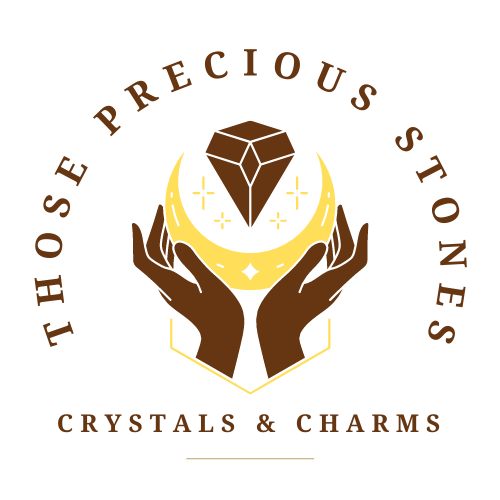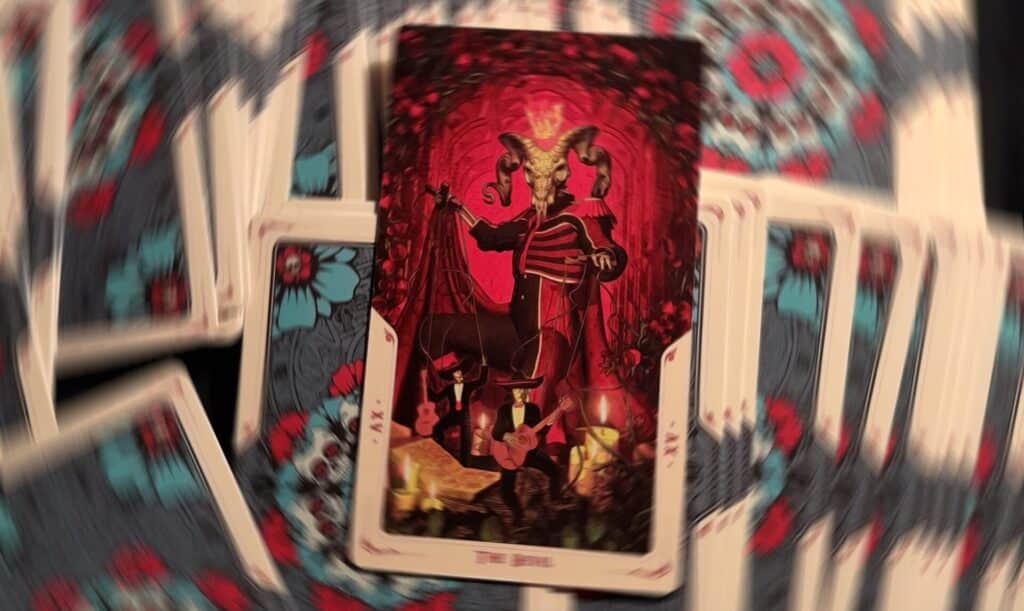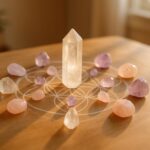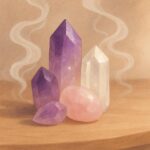Tarot cards have a fascinating history and are often used as tools for divination and self-reflection. One card that particularly captures the imagination is the Devil card. In this article, we will delve into the intricacies of this enigmatic card and explore its meaning in different tarot decks and readings.
Understanding Tarot Cards
When delving into the world of tarot cards, it is essential to have a solid understanding of their origins and structure. Tarot cards have a fascinating history that dates back to the medieval period. Originally used as playing cards, they were later associated with divination and esoteric practices. The evolution of tarot cards from mere game pieces to powerful tools of insight is a testament to their enduring appeal.
Brief History of Tarot Cards
The origins of tarot cards can be traced back to the medieval period, specifically to 14th-century Europe. Initially, they were used purely for entertainment purposes, serving as playing cards in various games. However, as time went on, their symbolism and archetypal imagery began to captivate the imaginations of those who encountered them.
It wasn’t until the late 18th century that tarot cards started to gain recognition as tools for divination and self-reflection. The occult revival during this period brought tarot cards into the realm of esoteric practices, where they found a new purpose beyond their original use as playing cards.
With their rich symbolism and intricate artwork, tarot cards offer unique insights into the human psyche. Each card carries its own meaning and represents different aspects of life, making them a valuable tool for introspection and guidance.
The Structure of a Tarot Deck
A standard tarot deck consists of 78 cards, each with its own significance and symbolism. These cards are divided into two main categories: the Major Arcana and the Minor Arcana.
The Major Arcana is comprised of 22 cards, each bearing a distinct name and number. These cards represent significant life events and spiritual lessons. From the Fool, symbolizing new beginnings and limitless potential, to the World, representing completion and fulfillment, the Major Arcana takes us on a journey through the various stages and experiences of life.
The Minor Arcana, on the other hand, consists of four suits: Cups, Pentacles, Swords, and Wands. Each suit is made up of 14 cards, including the Ace through Ten, as well as the Page, Knight, Queen, and King. These cards reflect different aspects of daily life, such as emotions, material wealth, intellect, and creativity.
By combining the cards from the Major and Minor Arcana in a tarot reading, practitioners can gain a holistic understanding of a situation or seek guidance on specific areas of their lives. The intricate interplay between the cards and their meanings adds depth and nuance to the readings, allowing for a comprehensive exploration of the querent’s concerns.
Whether you are a seasoned tarot reader or a curious beginner, the world of tarot cards offers a wealth of knowledge and insight. Exploring their history and structure is just the tip of the iceberg, as the true magic lies in the interpretations and connections formed during a tarot reading. So, grab a deck of tarot cards and embark on a journey of self-discovery and enlightenment.
Introduction to the Devil Card
The Devil card is a powerful and intriguing card in the tarot deck. It holds deep symbolism and represents themes of temptation, bondage, and unhealthy attachments. When this card appears in a reading, it serves as a reminder that we have the power to break free from self-imposed limitations and patterns. It encourages us to confront our fears and urges us to examine the areas where we may be holding ourselves back.
As we delve into the meaning of the Devil card, it is important to approach it with an open mind and a willingness to explore the depths of our own psyche. This card invites us to confront our shadow self, the parts of us that we may prefer to keep hidden. By shining a light on these darker aspects, we can gain a deeper understanding of ourselves and begin the process of transformation and growth.
The Symbolism of the Devil Card in Tarot
The symbolism of the Devil card is rich and multifaceted. It often depicts a figure with horns and wings, representing the dual nature of our desires and the potential for both good and evil within us. The chains that bind the figure symbolize the self-imposed limitations and addictions that hold us back from reaching our full potential.
When the Devil card appears in a reading, it is a call to examine the areas of our lives where we may be trapped in unhealthy patterns or attachments. It reminds us that we have the power to break free from these chains and regain our personal freedom. This card urges us to confront our fears and confront the parts of ourselves that we may have been avoiding.
While the Devil card may seem ominous at first glance, it is important to remember that it is ultimately a card of liberation. It is a reminder that we have the ability to choose our own path and release ourselves from the bonds that hold us back. By facing our fears head-on and embracing our true selves, we can transcend the limitations that the Devil card represents.
The Artwork of the Devil Card
One of the fascinating aspects of the Devil card is the diverse artwork that can be found in various tarot decks. Each deck offers its own unique interpretation of the Devil card, adding depth and nuance to its meaning. Some decks portray a fearsome figure with horns, wings, and a menacing expression, while others take a more abstract approach.
The artwork of the Devil card allows for personal interpretation and invites us to explore the symbolism in a way that resonates with our own experiences and beliefs. Whether it is a traditional depiction or a more modern and abstract representation, the artwork of the Devil card serves as a visual gateway into the realm of our subconscious.
When we gaze upon the artwork of the Devil card, we are invited to delve deeper into its meaning and reflect on the ways in which it resonates with our own lives. The imagery can evoke emotions and insights that may not be immediately apparent in the written interpretations. It is through this visual exploration that we can gain a deeper understanding of the Devil card and its significance in our own personal journey.
Detailed Interpretation of the Devil Card
The Devil card is one of the most intriguing and thought-provoking cards in the tarot deck. Its appearance in a reading can elicit a range of emotions, from fear and anxiety to curiosity and fascination. The Devil card symbolizes the powerful forces that can hold us captive, both externally and internally.
Upright Devil Card Meaning
When the Devil card appears upright in a tarot reading, it often signifies being trapped in a situation or mindset that is restricting our growth. This card serves as a wake-up call, reminding us to examine our beliefs, habits, or relationships that may be holding us back from reaching our full potential.
The Devil is a symbol of temptation and addiction, urging us to confront the vices that have a grip on us. It invites us to explore the darker aspects of our psyche and confront the shadows that lurk within. By acknowledging and understanding these hidden parts of ourselves, we can begin to break free from their control.
Furthermore, the Devil card serves as a reminder that we have the power to overcome any obstacles that stand in our way. It encourages us to confront our fears and desires head-on, rather than allowing them to control us. By facing our inner demons, we can transform our lives and emerge stronger and wiser.
Reversed Devil Card Meaning
When the Devil card appears reversed, it suggests a gradual release from limiting beliefs or toxic patterns. This card signifies the liberation from self-imposed bondage and the opportunity for personal growth and transformation.
The reversed Devil card invites us to question the illusions and false beliefs that have been holding us back. It encourages us to let go of self-destructive behaviors and embrace a more authentic path. This card serves as a powerful reminder that we have the ability to break free from negative influences and create positive change in our lives.
By embracing the energy of the reversed Devil card, we can embark on a journey of self-discovery and self-empowerment. It is an invitation to let go of the chains that bind us and step into a brighter future.
In conclusion, the Devil card is a complex and multifaceted symbol that challenges us to confront our fears, desires, and limiting beliefs. It serves as a reminder that we have the power to break free from any situation or mindset that is holding us back. By embracing the lessons of the Devil card, we can embark on a transformative journey towards personal growth and liberation.
The Devil Card in Different Tarot Decks
Rider-Waite Devil Card
In the Rider-Waite tarot deck, the Devil card depicts a male and female figure bound by chains to a pedestal. This representation symbolizes the influence of material desires and attachments on our lives. It encourages us to examine the ways in which we may be allowing external influences to control our actions and decisions.
Thoth Tarot Devil Card
In the Thoth Tarot deck, the Devil card embodies themes of materialism and the illusion of control. It emphasizes the importance of introspection and self-awareness in breaking free from worldly desires and attachments. This card invites us to explore the roots of our cravings and confront the patterns that may be limiting our spiritual growth.
The Devil Card in Various Types of Readings
Love and Relationships Readings
In love and relationships readings, the Devil card often highlights codependency, toxicity, or power imbalances within the partnership. It serves as a wake-up call to address any unhealthy dynamics and encourages open communication and self-reflection. This card reminds us to prioritize our own well-being and set healthy boundaries.
Career and Finance Readings
In career and finance readings, the Devil card warns against becoming too fixated on material wealth or pursuing career paths that compromise our values and integrity. It urges us to evaluate our priorities and make choices that align with our higher purpose. This card encourages us to challenge conventional expectations and embrace our true passions.
As with all tarot cards, the meaning of the Devil card is influenced by the surrounding cards and the individual’s unique circumstances. It serves as a powerful reminder that we are free to shape our own destinies and transcend the limitations that may be holding us back. By embracing self-awareness and courageously confronting our shadows, we can harness the transformative energy of the Devil card to guide us towards a more fulfilling and authentic life.








1 thought on “What Does the Devil Card mean in Tarot?”